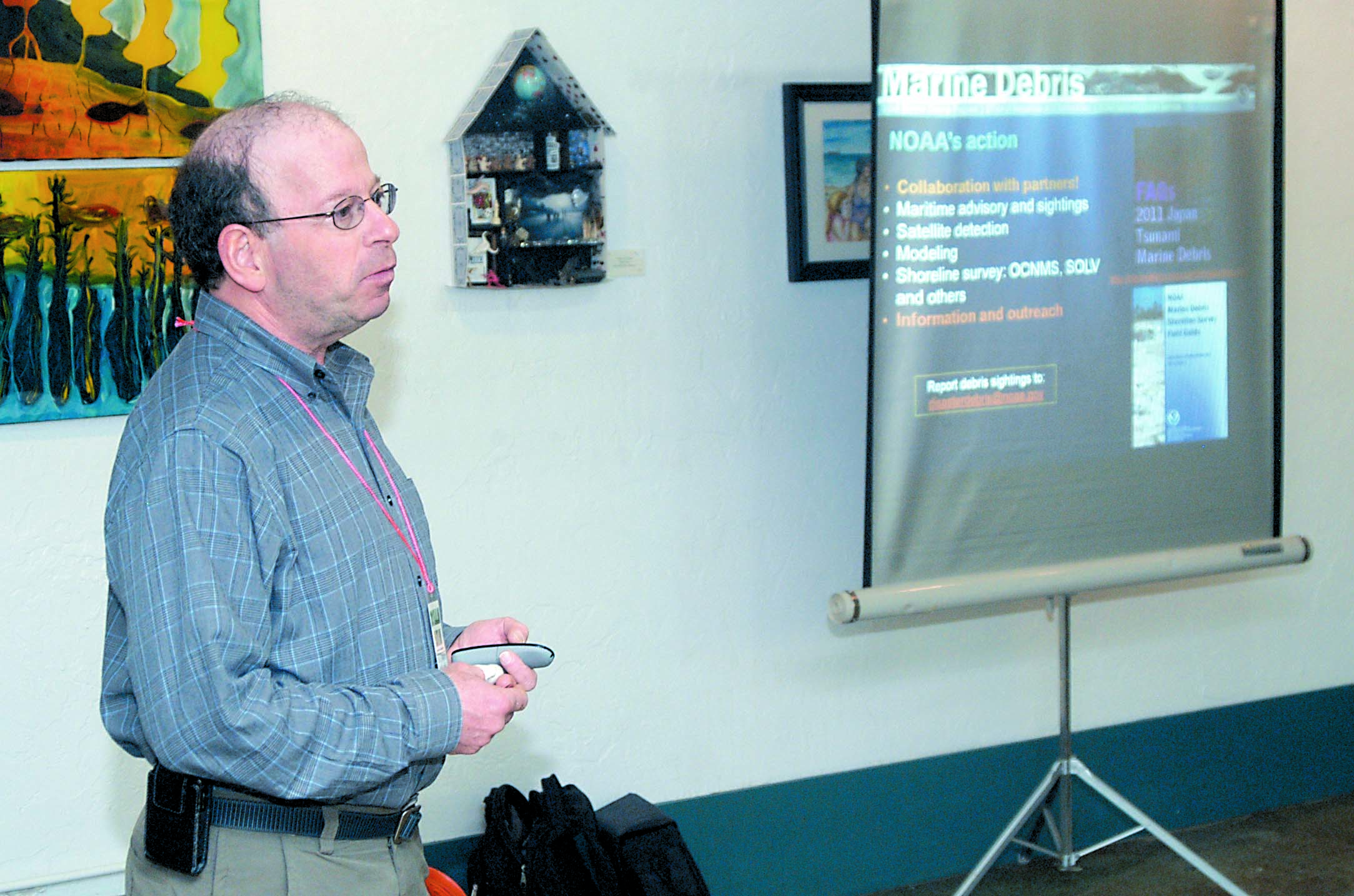PORT ANGELES — What sea trash and flotsam that was picked up along the Olympic Coast’s shores Saturday will give federal officials a better handle on when and how much Japan tsunami-related debris washes up from the Pacific Ocean.
“This weekend’s beach cleanup is our first glimpse of what we will see coming,” Bob Steelquist, Olympic Coast National Marine Sanctuary education and outreach coordinator, said Saturday.
Though flotsam from Japan continue to show up on the Olympic Coast, the biggest wave is at least a year away.
“It’s not predicted to show up here until next year,” said Carol Bernthal, OCNMS superintendent.
One future issue to consider is the fact there is limited access into the Olympic Coast wilderness which will make cleanup in remote areas incredibly difficult, Bernthal said.
Millions of tons of sea debris were released when a tsunami that reached 130 feet swept across some 217 square miles on March 11, 2011, following a 9.0-magnitude earthquake in Northeast Japan that killed more than 20,000 people.
Nir Barnea, project manager of the National Oceanic and Atmospheric Administration Marine Debris Program, told a crowd of about 30 Saturday during Klallam Earth Day events at The Landing mall in Port Angeles that as much as 25 million tons of debris were created by the quake and tsunami. Of that, he said, about 5 million tons were washed out to sea.
Now that ocean experts know it’s just a matter of when before the debris lands somewhere between Cape Flattery and Kalaloch, the next step, Barnea said, is for NOAA and local marine officials to come up with a cleanup strategy.
“It’s better to have a plan and be ready for it,” Barnea said.
A number of large plastic and Styrofoam floats have been reported by beach monitors and hikers along the peninsula’s coastline.
At sea, sightings of several boats, including an adrift Japanese ghost vessel recently sent to the sea bottom off Alaska when a U.S. Coast Guard cutter fired on it.
Barnea showed photos of the types of floats found so far, including red kerosene canisters.
Referring to the Fukushima Daiichi nuclear plant disaster, the result of the quake and tsunami, Barnes said it was “highly unlikely” anything that washes up on the Olympic Coast will be radioactive.
He also said it was highly unlikely that human remains would reach the North Olympic Peninsula’s shores.
“If you see human remains,” he said, “call 911.”
Barnea said it wasn’t likely that debris would drift into the Strait of Juan de Fuca because strong winds tend to blow out of the mouth of the Strait into the Pacific.
He said if an object can be traced back to Japan, and it could be of sentimental value to the person who lost it, finders should try to contact that person directly.
Do not, he stressed, report it to the Japan consulate, which has been inundated with inquiries since the tsunami.
Barnes urged those interested in cleaning up the coastline to contact the Coastal Observation and Seabird Survey Team at the Olympic Coast National Marine Sanctuary offices in Port Angeles by phoning 360-457-8496.
To report debris sightings, contact NOAA at marinedebris.web@noaa.gov or visit the website at marinedebris.noaa.gov.
Bernthal said the marine sanctuary staff was just beginning a “debris database.”
“I think over the next year, with the COASST program and monitors, we’ll be able to handle what is coming in,” she said.
Sequim-Dungeness Valley Editor Jeff Chew can be reached at 360-681-2390, extension 5052 or at jeff.chew@peninsuladailynews.com.

